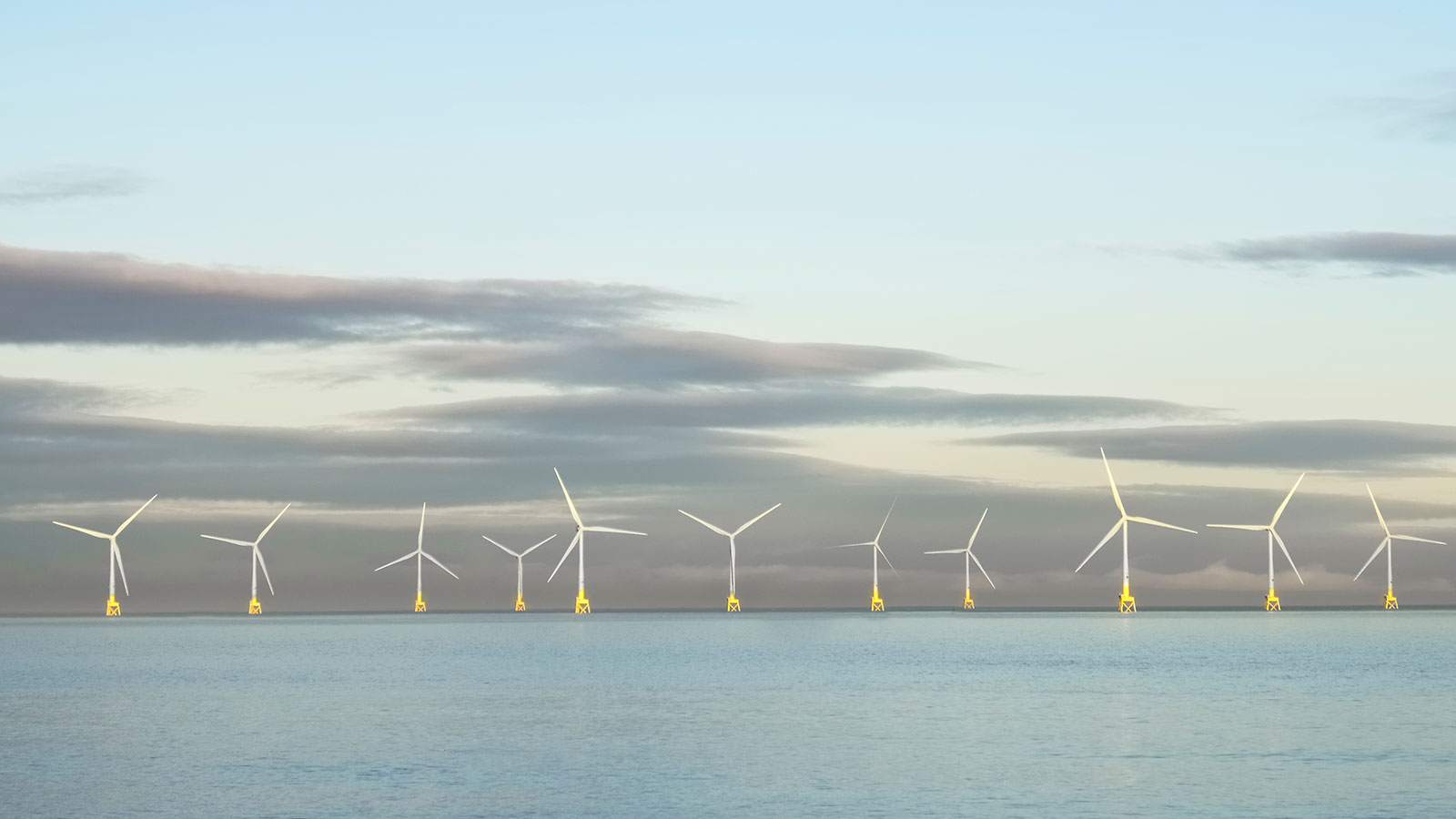A new report by the joint Government-industry Floating Offshore Wind Taskforce suggests that floating wind energy could become the UK’s most significant industrial success story of the century, as a separate study by RenewableUK reveals a 9% growth in the global pipeline of floating offshore wind projects over the past year.
The Taskforce’s report, dubbed ‘Floating Wind: Anchoring the Next Generation Offshore’, highlights that the UK’s engineering expertise and exceptional wind resources offer a head start in the global race to establish a £1 trillion floating wind industry by 2050.
According to the findings, the UK’s floating wind sector could employ 97,000 people by 2050, contributing £47 billion to the economy through domestic projects and technology exports. Many of these jobs would be based in Scottish and Welsh ports.
Dan McGrail, Co-Chair of the Floating Offshore Wind Taskforce and Chief Executive of RenewableUK, commented, “As this report shows, floating wind is set to become one of the biggest global industries of the twenty-first century, and the UK now has an unprecedented opportunity to seize the lead by scaling up this innovative technology.
“But we have to act fast, with industry and Government working closely together to transform ports around the country into centres of excellence where we can manufacture high-value components for floating turbines, especially in areas like the north east of Scotland and south Wales which need new industrial opportunities as we transition from fossil fuels to clean power.
“This will enable us to generate vast amounts of cheap electricity further out to sea where wind speeds are even higher, ensuring that costs plummet while boosting Britain’s energy security”.
Global growth in floating offshore wind
Meanwhile, a separate report from RenewableUK has revealed that the global pipeline of floating offshore wind projects has expanded from 244 gigawatts (GW) to 266 GW, with the number of projects increasing from 285 to 316. This growth underscores the rising importance of floating wind technology worldwide.
Currently, 245 megawatts (MW) of floating wind capacity are fully operational across 15 projects in seven countries. Norway leads with 94 MW across three projects, followed by the UK with 78 MW from two projects.
There will be significant growth in floating wind globally, however, with Italy holding the largest project pipeline at 41.3 GW, although most are at early development stages. The UK ranks third globally with 33.1 GW, representing 12% of the global floating wind portfolio, with three-quarters located in Scottish waters.

It’s believed that by 2050, floating turbines could supply a third of the UK’s offshore wind capacity, with 40 GW fully operational – enough to power every home in the country, even considering increased demand from electric heating and vehicles. While the cost of building floating wind projects could decrease by 30% by 2030, falling below £100 per megawatt hour.
However the Floating Offshore Wind Taskforce has warned that a lack of suitable ports for manufacturing and assembling floating turbines, along with strong competition from European suppliers, could hinder the UK from realising the full economic potential of floating wind unless the supply chain is prioritised.
The Taskforce recommends focusing on high-value segments of the floating wind supply chain, such as steel and concrete platforms, cables, moorings, and anchors, aligning with the Industrial Growth Plan for offshore wind. Innovations like standardising platform designs and utilising robotics such as drones for inspections are also highlighted as ways to reduce costs.
Energy Secretary Ed Miliband commented, “Floating offshore wind is at the heart of the government’s mission to make Britain a clean energy superpower.
“Great British Energy’s newly launched partnership with The Crown Estate will help achieve this, allowing us to seize on our unique opportunity to win the global race for floating offshore wind – with this report showing how much government and industry can achieve by working together.
“By leading the world in this cutting-edge technology, we can speed up the transition to clean energy and secure good jobs and economic growth for our industrial heartlands – all while ensuring the expertise of our North Sea workforce are the people who power this clean future.”
First Minister of Scotland John Swinney added, “Scotland is at the forefront of floating offshore wind development and deployment in the UK and the sector represents a significant economic opportunity for our country.
“That’s why we are investing up to £500 million over five years to anchor our offshore wind supply chain, helping to support market certainty whilst creating a highly competitive economy, providing thousands of new jobs and supporting our transition to net zero.
“I am pleased to see that this report recognises Scotland’s vast potential for renewable energy, and we will continue to work with industry partners to ensure Scotland continues to be a leading global location for floating offshore wind deployment and supply chain investment.”

